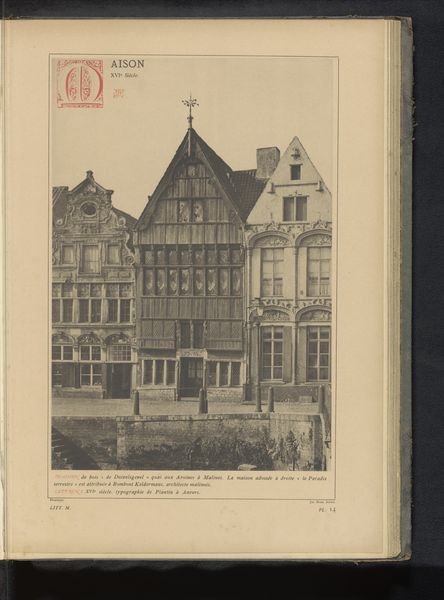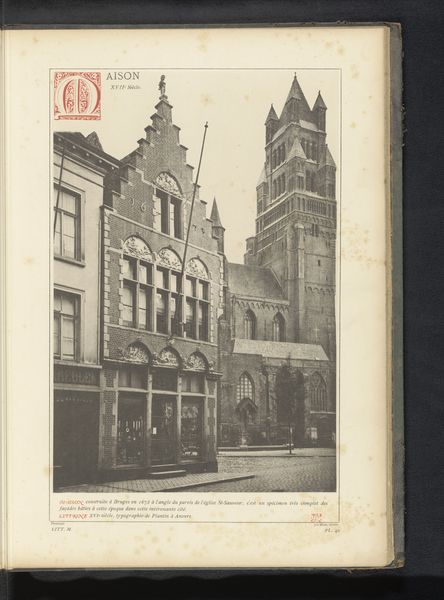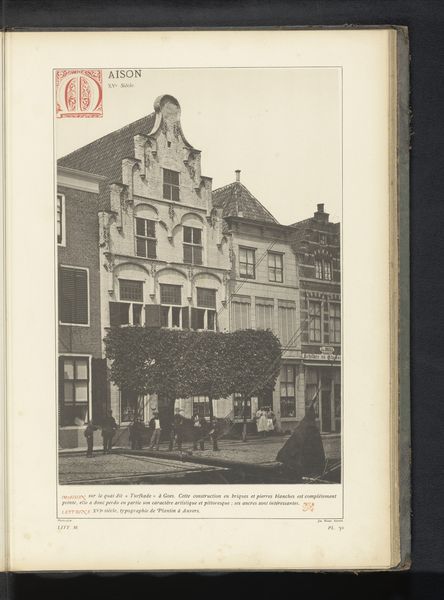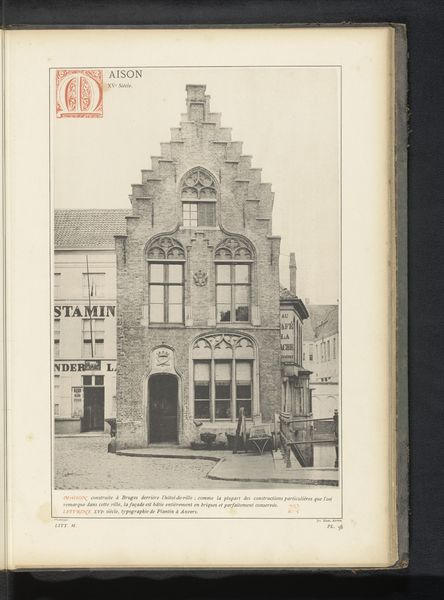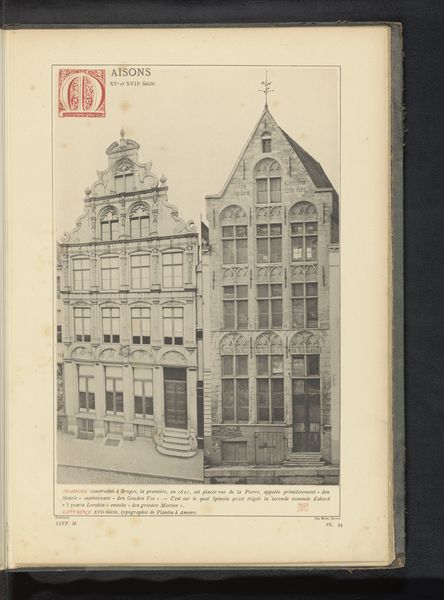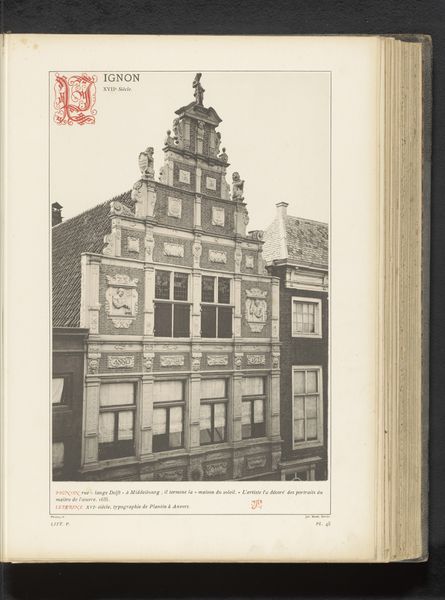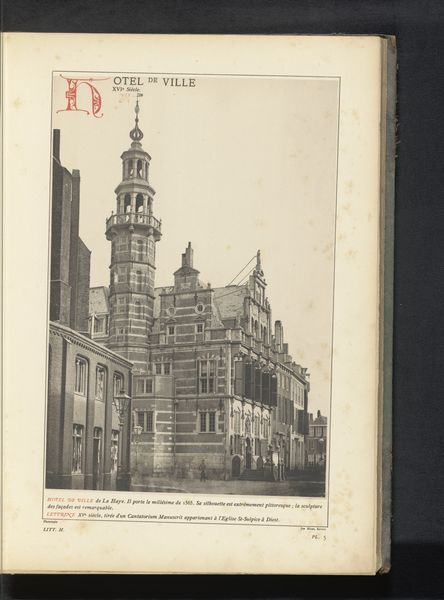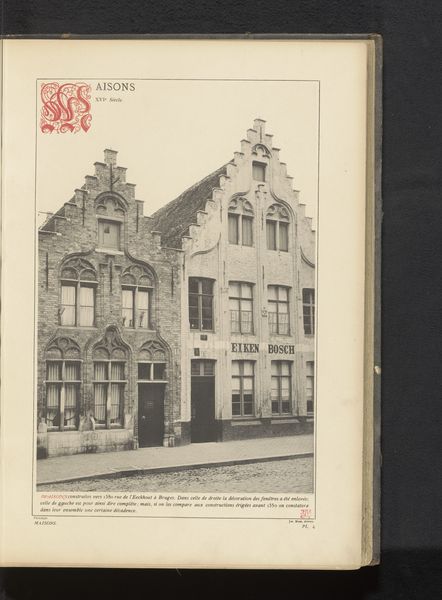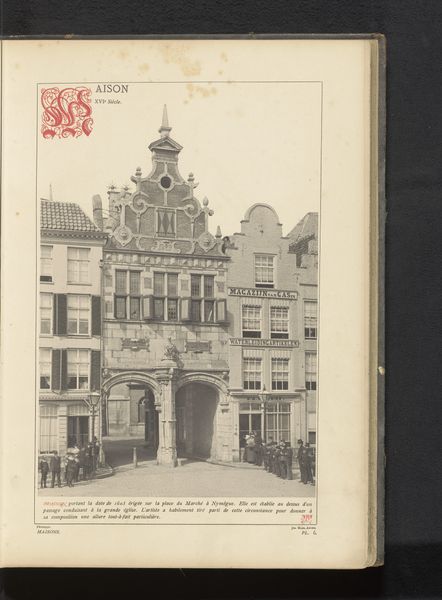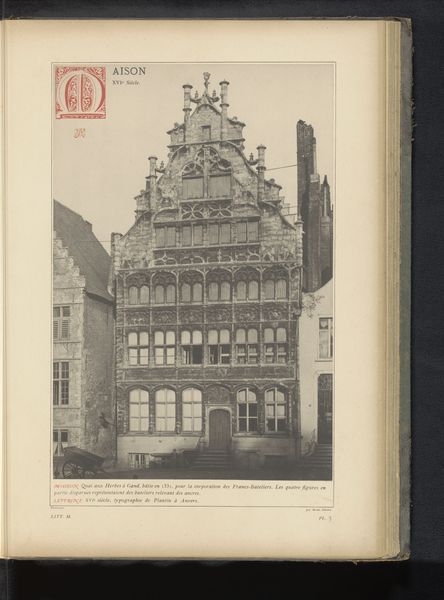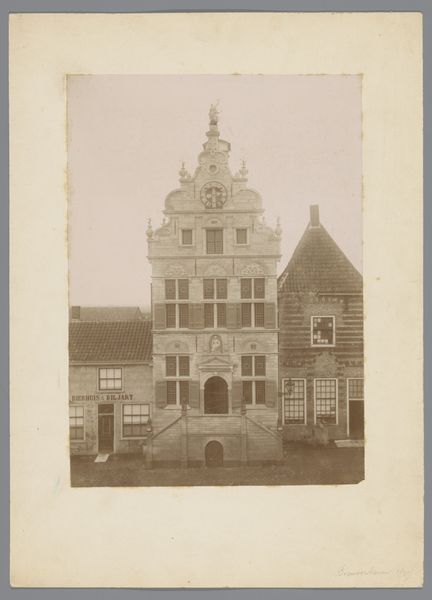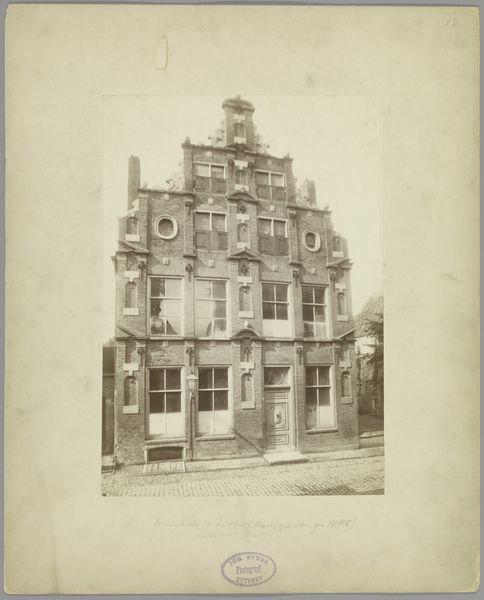
print, photography
#
dutch-golden-age
# print
#
photography
#
cityscape
#
genre-painting
#
realism
Dimensions: height 339 mm, width 230 mm
Copyright: Rijks Museum: Open Domain
Editor: This print, titled "Huis in Alkmaar, met op de voorgrond mannen en kinderen op een kade," dates from before 1880. The scene, rendered in photography, depicts a Dutch cityscape with figures in the foreground. The building dominates the scene with its intricate facade. I'm struck by the rigid formality of the composition, with people neatly posed in front of the building. What can you tell me about it? Curator: What I see is a tableau deeply embedded in the social fabric of the late 19th century. Look at how the architecture functions as a backdrop but also as a marker of social status and economic power. Who are these people gathered in front? How does their presence, their postures, and their clothing, reflect the hierarchies of the time? Consider, too, that the inclusion of children prompts questions of labour and social mobility. What opportunities were available to them, framed within the context of burgeoning industrial capitalism? Editor: It seems like the architecture dwarfs the figures, almost like the building is more important. Curator: Exactly! The architecture *is* more important. Think about how buildings represent permanence and the aspiration toward prosperity. Whose stories get told, whose histories are valued? Consider the photographic process itself – who had access to these technologies, and whose image was being captured? The medium inherently carries political weight. Editor: That's a powerful point; photography wasn't equally accessible to everyone. Curator: Precisely. We have to question the act of documentation itself. It's not just a neutral capturing of a scene but a constructed narrative shaped by the photographer's choices and the socio-political context of the time. What perspective isn’t represented in this image? Whose voices are absent? Editor: I’m definitely viewing it differently now. Seeing how much is unsaid helps understand what *is* being said, I suppose. Thanks for shedding light on those layers. Curator: Art gives us the language to dissect assumptions and advocate for inclusive narratives. That’s why it continues to matter.
Comments
No comments
Be the first to comment and join the conversation on the ultimate creative platform.
